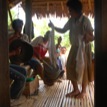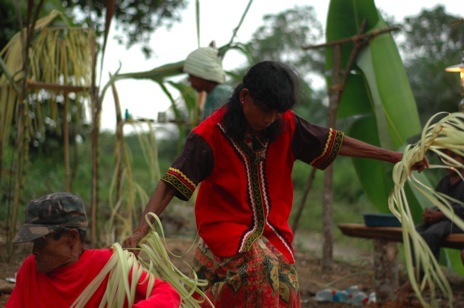The World of Agusan Manobo Music





Kubing
(Photo in Maceda)

Takumboq
(Photo by C Buenconsejo)

Gimbæ and Agung
(Photo by C Buenconsejo)
The Manobo word “lisag” refers to dance-rhythm. It is played on the jaw harp, struck bamboo zither, drum, and gong.
Drum and gong are played in a pair and only during ritual performances. Because it is a taboo to sound these instruments outside of such occasion for fear of sagman (i.e., because the playing always carries with it some kind of risk that can harm the player), the takumboq serves as a substitute when accompanying simulations of ritual dances in non-ritual occasions.
Both drum and gong and bamboo struck zither have the same repertory. The drum and gong rhythm serves as a prelude to a ritual performance and is called binaylan (i.e., in the style of the baylan). This is sometimes described as tinaga-untod (in the style of the mountain people). The rhythm is symbolic of authority that ritual represents. In the first part of ritual, rhythm is felt as “hard” as this corresponds to the aggressive, war-like dance gesture that accompanies the killing of the sacrifice.
During the ritual intermission as the pig is cleaned and cooked, participants take turn in dancing, especially mimicking the medium’s dance that they had just witnessed in the preceding ritual part. There are a number of “secular” dance rhythms played during these moments, the more famous ones are minandaja (in the style of the Mandaya people) and the feminine style (simbatan and pinandanggo). The latter uses the handkerchief. The rhythm that accompanies the medium’s dance in the 2nd part is perceived to be “soft” (beteng-beteng, sometimes also referred to as sibey) and this is played particularly when the medium elevates (bajaw) the cooked food offerings. All these dances express human joy and liveliness.
The jaw harp can articulate, not only speech, but dance rhythms as well. In contrast, dance rhythms played on the kubing are limited, the most famous one being the rhythm depicting intertribal ambush. Manobos claim that this instrument is also used to send secret messages, information about an impending ambush that must be kept secret.


Dance-rhythms of sociability
